This Tamarind Sauce recipe has a spicy, sweet, and sour taste. It's a delicious and versatile dipping sauce, similar to tamarind chutney, and knows no bounds when it comes to cultural cuisine. Serve it with Spanish Empanadas, Lebanese Sambousek, Philipino Lumpia, Indian Samosas, or American Chicken Nuggets!

You may have had tamarind chutney at your favorite Indian restaurant. It's usually served as a dipping sauce with samosas and paneer pakora. My soy tamarind sauce is similar in taste. It's spiced with chili sauce and sweetened with brown sugar, but the key ingredient is tamarind, which is slightly sweet and mouth-puckeringly sour. The combination of flavors is freaking amazing!
Although tamarind is barely used in America, throughout the rest of the world, it is a popular ingredient used to enhance the flavor of both savory and sweet dishes. Tamarind is especially popular in Thailand, Africa, Mexico, the Middle East, and Asia.
When I was a child in Iraq, tamarind was one of my favorite sour snacks. What can I say, sour gummy worms weren't invented yet. I would crack open the pods and take a bite of the tamarind, spitting out the membranes and the seeds. It is so delicious, I still enjoy eating tamarind, but I prefer the paste over the tamarind pods.
Jump to:
🧐 Why This Recipe Works
This Soy Tamarind Sauce Recipe is quick, simple, and very flavorful! It can be served as a dipping sauce with this homemade samosa recipe, chicken, and even french fries!
Tamarind can be purchased in a slab or as dried pods. The tamarind paste in the pods needs to be cooked a bit longer to form a soft paste, while the pressed tamarind slab is already moist.
After boiling either variety, the tamarind needs to be strained to remove the seeds and stringy fibers, which can be tossed out.
Strained tamarind pulp can then be used to make not only soy tamarind sauce or tamarind syrup, but many other things including tamarind candy and tamarind margaritas!
🛒 What You Need To Make This Recipe
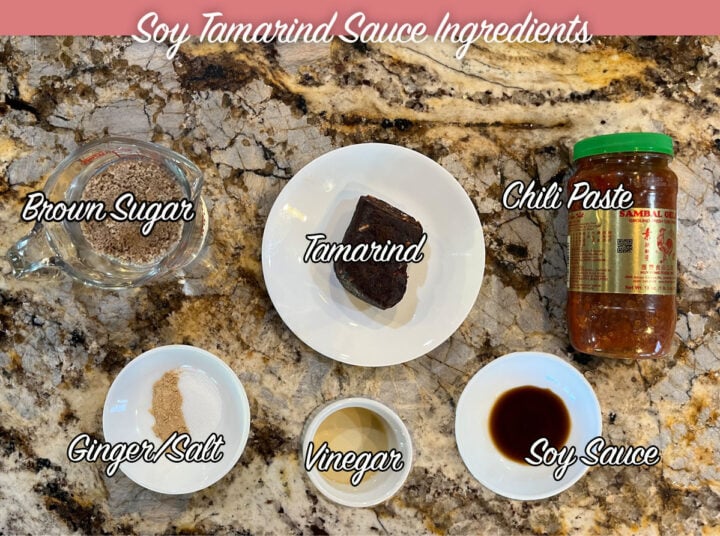
🔖 Recipe Ingredients & Substitutions
- Tamarind: Tamarind can be purchased as a slab (affiliate link), or as pods. lt even comes as a concentrate in jars (affiliate link). You can purchase tamarind at most grocery stores, Asian grocery stores, Latin markets, and Middle Eastern markets. You can also conveniently purchase it on Amazon.
- Soy Sauce: Lite soy sauce or regular soy sauce can be used to make tamarind sauce.
- Sugar: Many Soy Tamarind Sauce recipes call for Jaggery, which is a type of cane sugar that comes in the shape of a cone and is used in Indian cuisine. I prefer to use brown sugar. However, if you need to, you can substitute with white granulated sugar if necessary.
- Chili Paste: Sambal Oelek Ground Fresh Chili Paste tastes amazing. Not only is it spicy, but it is also quite garlicky, which is why I don't add additional garlic in this recipe. If you choose a different brand or use cayenne pepper, you will want to add a few cloves of fresh garlic.
- Vinegar: Apple cider vinegar can be substituted with red wine or white wine vinegar. If you don't have any vinegar at home, use lemon juice.
- Ginger: Although I like to add ginger to my Soy Tamarind Sauce. Unless you like ginger, the flavor can be overpowering. If you are in the "I hate ginger" camp, use cumin, coriander, or your favorite spice instead.
🔪 Tools Needed to Make this Recipe
- Saucepan
- Fine mesh strainer (affiliate links)
🍯 How to Make This Recipe
Step 1: Tear tamarind paste into chunks and add to a medium saucepan. Cover with 1 cup of water and soy sauce. Simmer over low to medium heat for 5 minutes, then mash to extract the pulp.
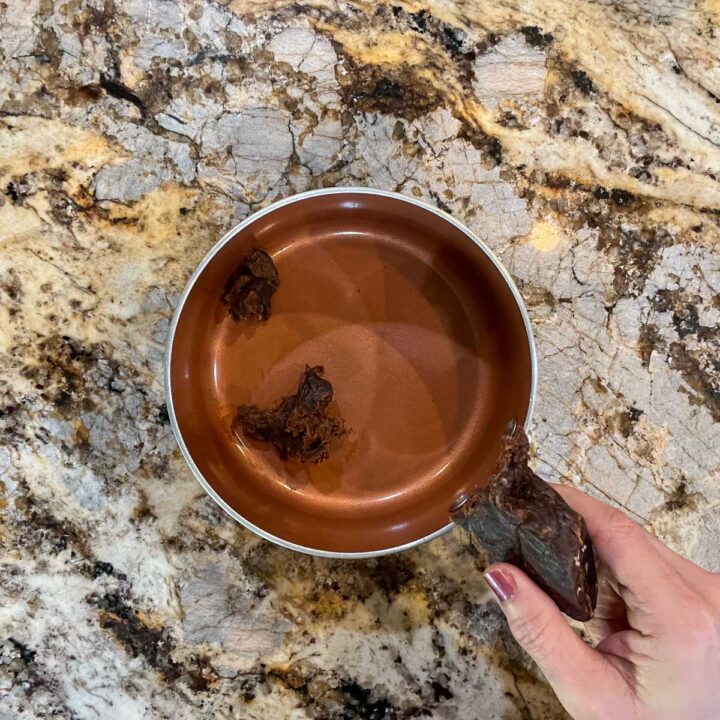
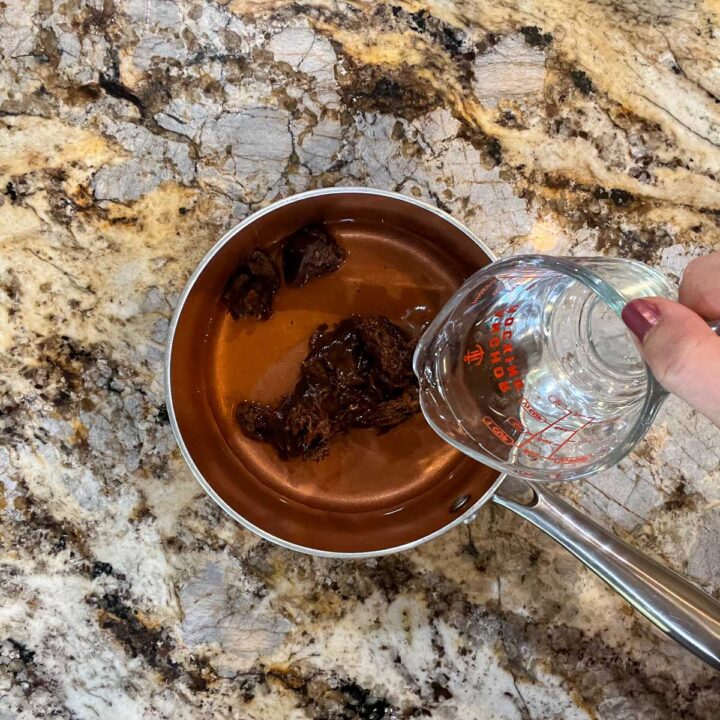


Step 2: Strain tamarind pulp over a bowl. Using a rubber spatula, push the pulp through the strainer, leaving behind the seeds, and stringy fibers to discard. Don't forget to scrape the pulp that collects on the bottom of the strainer!

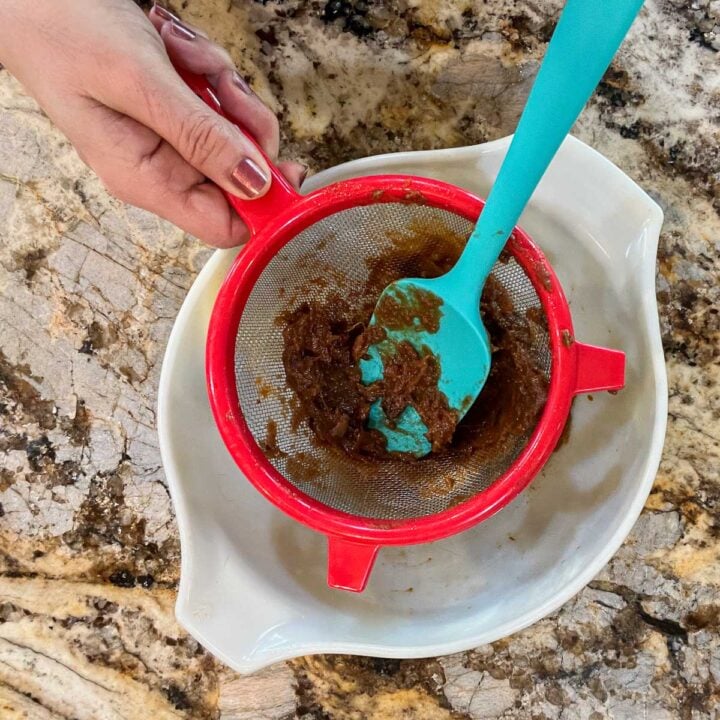

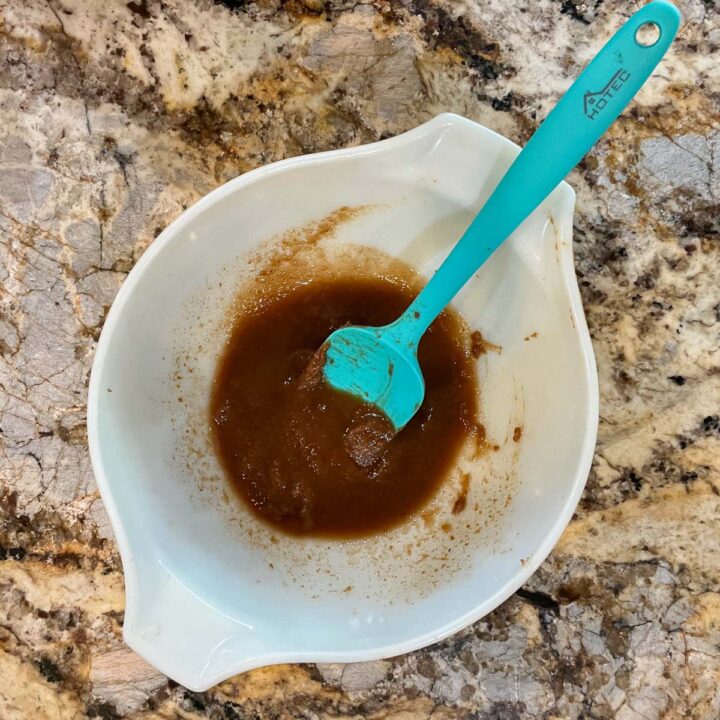
Step 3: Add vinegar, chili paste, salt, and ginger powder. Stir to blend ingredients. Clean the saucepan and pour the tamarind mixture back into it. Stir brown sugar into the tamarind mixture; simmer the tamarind sauce for a few minutes over low heat to dissolve the sugar.
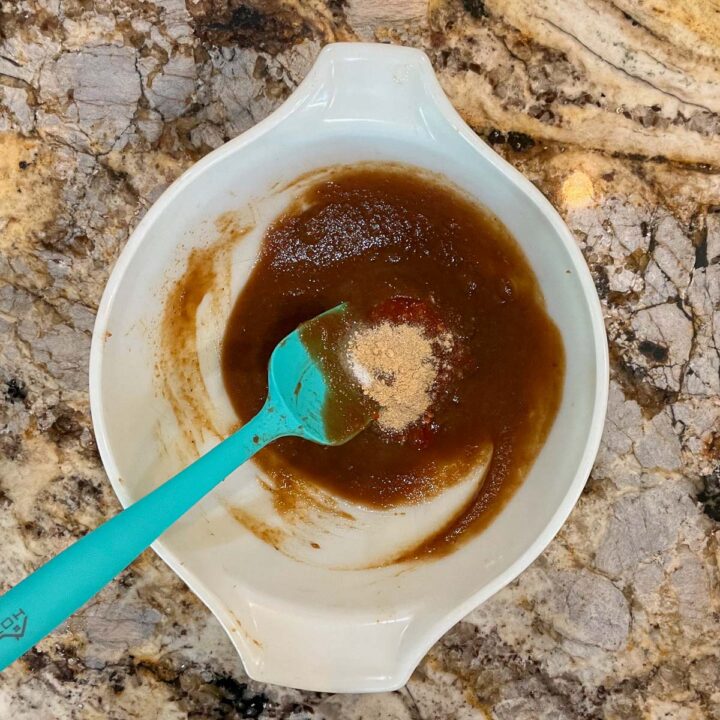
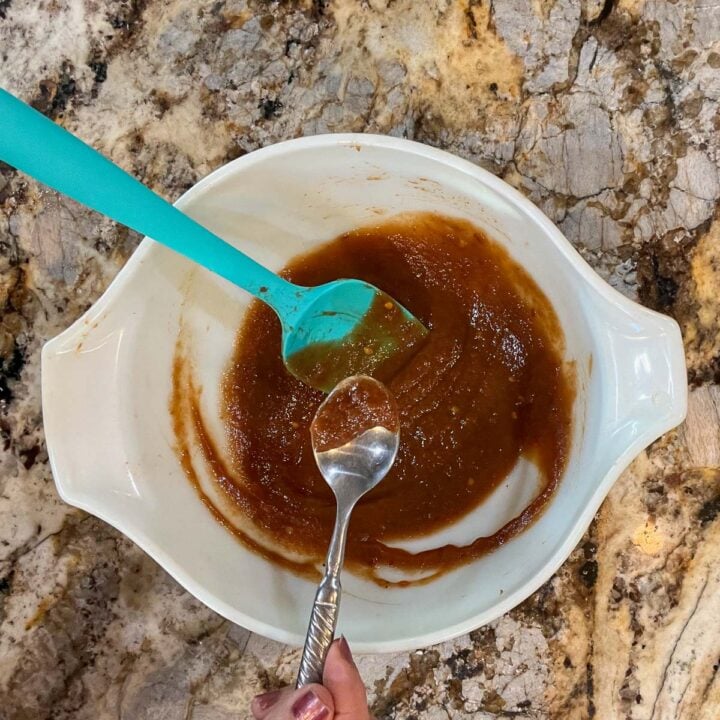
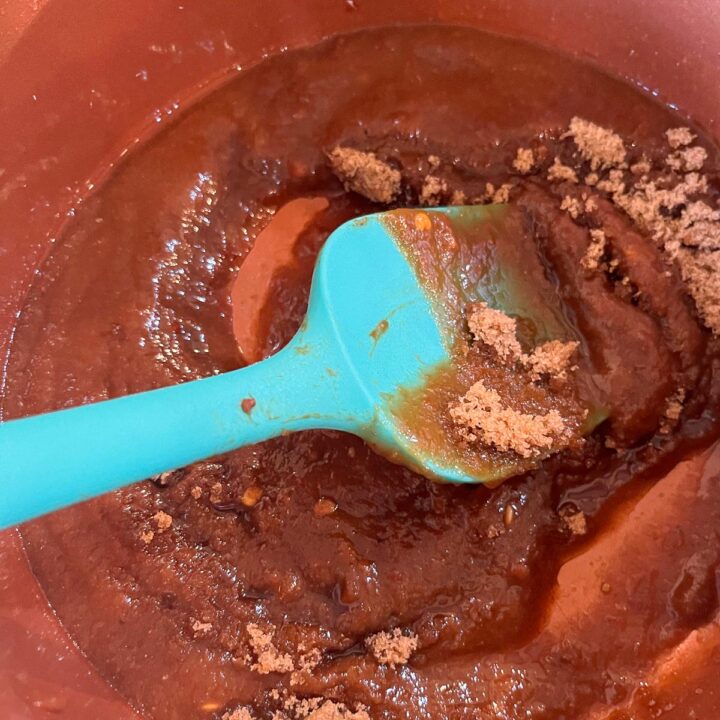

If you're looking for other tasty dipping sauce recipe ideas, head over to Be Brave and Bloom and try this delicious Wondon Dipping Sauce! You can also serve it with spring rolls, egg roll, and Filipino Lumpia!
🤷🏻♀️ Recipe FAQs
Tamarind paste is a sticky, sour, paste that's contained within the finger-shaped tamarind pods. Tamarind pods are tropical fruit that grows on the Tamarind tree. The tamarind paste is under the hard, dry pod shell, which needs to be cracked to expose the paste. The flavorful paste encapsulates large, inedible, shiny black tamarind seeds.
Tamarind paste tastes tangy, and sour, with a hint of sweetness. It's used in Indian curries, tamarind chutney, pad Thai, Mexican dishes, and Middle Eastern cuisine to add a sweet and sour flavor to savory dishes.
To expose the tamarind paste, the dry tamarind pods need to be cracked open. Intermixed with the tamarind paste are stringy, inedible membranes. The easiest way to separate the tamarind from the seeds and membranes is to simmer it in hot water to strain out the edible tamarind pulp.
Tamarind paste can be used to flavor soups, curries, desserts, and cocktails. In Mexico, it's used to flavor drinks like Jarritos Tamarind Soda and agua fresca de tamarindo, which is a non-alcoholic drink made with tamarind juice, water, and ice.
👩🏼🍳 Pro Tips
- If the Soy Tamarind Sauce is too thick and more like tamarind chutney, add water, 1 tablespoon at a time, until you achieve the desired consistency.
- To store Soy Tamarind Sauce leftovers, pour it into an airtight container and store in the refrigerator. It should be good for a few weeks, as long as there is no cross-contamination.

If you enjoy making your own homemade sauces, you may want to check out these other delicious sauces: honey mustard sauce for ham, 5 ingredient sriracha aioli, pasta cream cheese sauce, homemade enchilada sauce, and easy Instant Pot spaghetti sauce.
🥘Related Recipes
If you enjoy this Soy Tamarind Sauce recipe, you may want to check out these recipes as well!
Love this recipe? Please leave a 5-star 🌟🌟🌟🌟🌟rating in the recipe card below & a review in the comments section further down the page.
Stay in touch with me through social media @ Instagram, Pinterest, TikTok, and Facebook. Don't forget to tag me when you try one of my recipes!
📖 Recipe

Easy Soy Tamarind Sauce
Ingredients
- 4½ ounces tamarind slab
- 1¼ cups water (divided)
- 1 tablespoon soy sauce
- 2 teaspoon apple cider vinegar
- 1 tablespoon Sambal Oelek ground fresh chili paste
- ¼ teaspoon sea salt
- ¼ teaspoon ginger powder
- ¼ cup brown sugar
Instructions
- Tear tamarind paste into chunks and add to a medium saucepan. Cover with 1 cup water and soy sauce. Simmer over low to medium heat for 5 minutes, then mash to extract the pulp.
- Strain tamarind pulp over a bowl. Using a rubber spatula, push the pulp through the strainer, leaving behind the seeds, and stringy fibers to discard. Don't forget to scrape the pulp that collects on the bottom of the strainer!
- Add vinegar, chili paste, salt, and ginger powder. Stir to blend ingredients. Clean the saucepan and pour the tamarind mixture back into it. Stir brown sugar into the tamarind mixture; simmer for a few minutes over low heat to dissolve the sugar.
Notes
- If the Soy Tamarind Sauce is too thick, add water, 1 tablespoon at a time, until you achieve the desired consistency.
- To store Soy Tamarind Sauce leftovers, pour into an airtight container and store in the refrigerator. It should be good for a few weeks, as long as there is no cross-contamination.


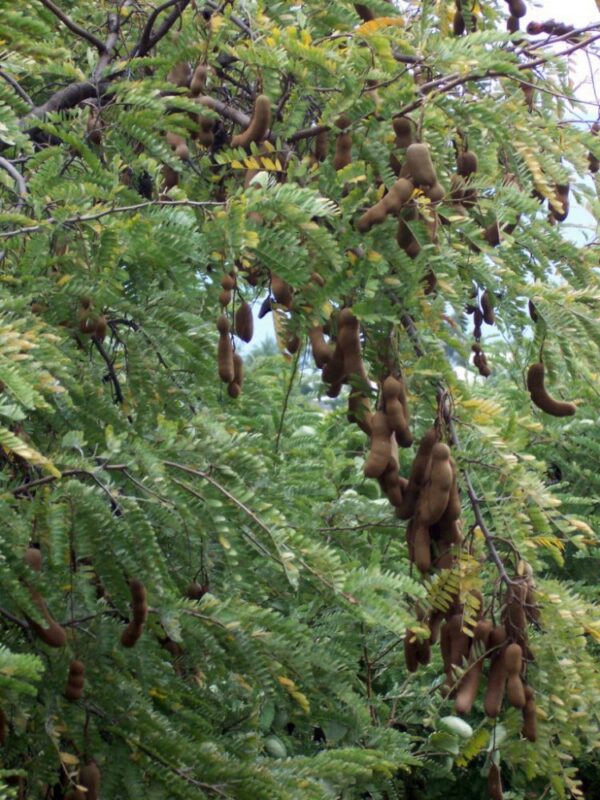


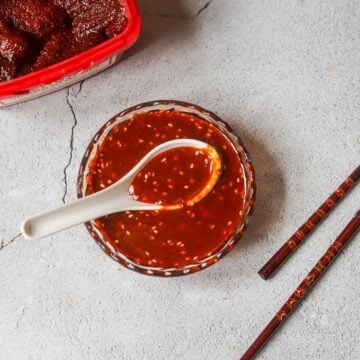
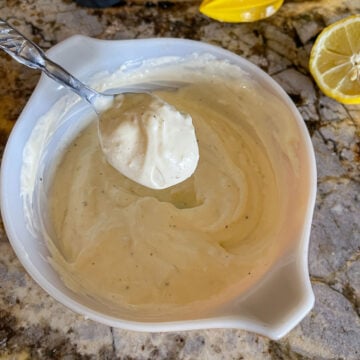

Comments
No Comments